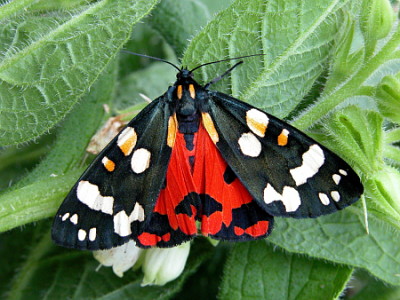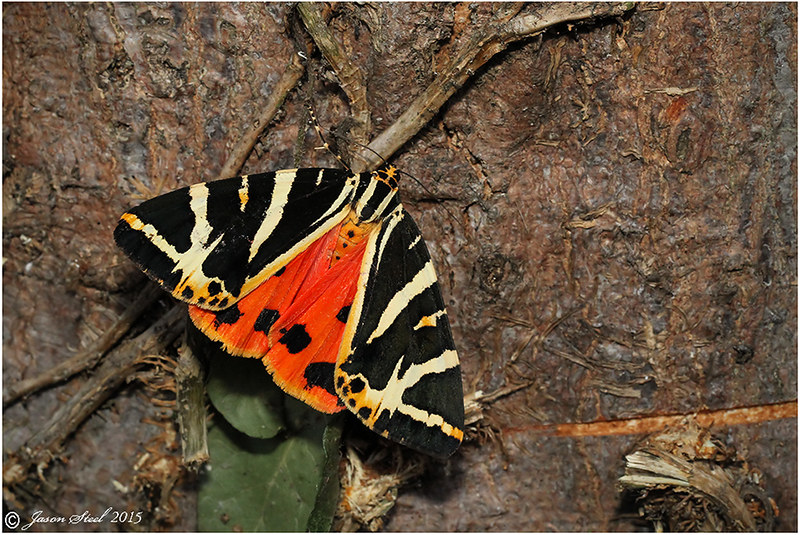Caterpillar
Printed From: Reptiles and Amphibians of the UK
Category: General
Forum Name: What is it?
Forum Description: Seen something in the wild and wondering what it is? This is the place to ask
URL: http://www.herpetofauna.co.uk/forum/forum_posts.asp?TID=4286
Printed Date: 19 Apr 2024 at 5:57am
Software Version: Web Wiz Forums 11.06 - http://www.webwizforums.com
Topic: Caterpillar
Posted By: tim-f
Subject: Caterpillar
Date Posted: 28 Jun 2012 at 9:35pm
|
On Lundy, 16 June 2012. Maybe 50mm long. Any ideas? |
Replies:
Posted By: Iowarth
Date Posted: 28 Jun 2012 at 10:41pm
|
Looks to me like a Greater Mythical Invisible Moth caterpillar - although I might manage a better guess with a picture! Chris ------------- Chris Davis, Site Administrator Co-ordinator, Sand Lizard Captive Breeding Programme (RETIRED) |
Posted By: tim-f
Date Posted: 28 Jun 2012 at 10:57pm
I thought you might be up for a challenge. Here's a little clue. |
Posted By: GemmaJF
Date Posted: 28 Jun 2012 at 11:24pm
| I'm no entomologist but it looks like a Fox Moth Caterpillar, a quick google confirmed they are found on Lundy. |
Posted By: tim-f
Date Posted: 28 Jun 2012 at 11:59pm
|
Thanks Gemma. They feed on heather, which was present, so looks likely. |
Posted By: Noodles
Date Posted: 11 Jul 2012 at 10:01am
| It's actually an Oak Eggar, which is superficially similar to the Fox moth; the latter lacking the white lateral markings. They also share the same heathland habitats, feeding on heathers as well as a variety of more widespread plant species (unlike the Fox). |
Posted By: GemmaJF
Date Posted: 11 Jul 2012 at 4:24pm
Nice one Noodles, I wasn't entirely convinced it was a Fox moth caterpillar, nice to know what it actually is. 
|
Posted By: Noodles
Date Posted: 12 Jul 2012 at 8:22am
| Just don't pick either up unless you want itchy hands for a couple of days! |
Posted By: Suzy
Date Posted: 12 Jul 2012 at 3:48pm
|
Is the oak egger a day flying moth that tends to have large hatches on the wing at once over heathland? I once witnessed the amazing sight of four hobbies hunting them down. There were hundreds of the moths on the wing at once and i guess that attracted the hawks. We just stood still and it was going on all around us and then suddenly the moths had all gone and so had the hobbies. One of those amazing things you see when out and about. So amazing I can't remember the moths' name but I think Oak Eggers!
------------- Suz |
Posted By: Noodles
Date Posted: 12 Jul 2012 at 4:39pm
|
OE can be seen in the day flying fast (and zig zaggy) above the heather.
There are also several other day flying moorland moth species of similar size but O Eggars would be a good bet (also Emperor or possibly Tiger moth species). Male Fox moths are more elusive and would tend not to be seen in numbers i would suggest. However, i'd not be surprised if hobbies took them all. Anyhow, it sounds like a great event you witnessed. OE is so named because it's cocoon resembles a detached acorn and typically only the male of all the above species fly during the day. Plenty of classic aircraft names in there eh Gemma? The Oak Eggar aircraft would not have had a pleasing ring to it, i suspect.
|
Posted By: Suzy
Date Posted: 12 Jul 2012 at 10:55pm
|
Yes Noodles I thought it was Eggars (sorry previous typo). Fast and zig zaggy sounds the ticket.
------------- Suz |
Posted By: GemmaJF
Date Posted: 12 Jul 2012 at 11:49pm
Yep the Chipmunk would have been much better named the De Havilland Oak Eggar Moth in my opinion
 I was lucky enough to see a DH Fox Moth not that long ago. Anyway enough of all that Suzy's observations and your moth knowledge are much more interesting I was lucky enough to see a DH Fox Moth not that long ago. Anyway enough of all that Suzy's observations and your moth knowledge are much more interesting  |
Posted By: tim-f
Date Posted: 19 Jul 2012 at 11:35pm
|
Thanks Noodles. Tuesday lunchtime I saw what I believe was a Garden Tiger Moth. It only landed for a split second on the outside of my office building and then was off, aided by a brisk breeze. Never seen one before. |
Posted By: Noodles
Date Posted: 20 Jul 2012 at 12:18pm
Was this the culprit? I do have hard photo copies of the ones i used to rear but i'd have to scan them. This image is off the internet.
A real stunner, highly toxic to predators and apparently in real decline, despite it often featuring in anecdotes from the members of generations past. So an impressive find.
I occasionally see the caterpillars on moorland but rarely the adults. To add insult they never seem to visit to my Robinson moth trap either. Garden Tiger There aren't many moths you could mistake it for. Try Scarlet Tiger if in the south (the only real contender), Jersey Tiger or Wood Tiger if in Jersey/Dorset/Devon or near moorland/heathland.  Scarlet Tiger I saw Scarlet Tigers several times when living in Reading and they do fly in the day. Also the Magpie moth is superficially similar to the Scarlet and common in gardens. Often seen during the day also.  Magpie moth P.S. The garden Tiger is typically nocturnal, although can occasionally be seen in the day. |
Posted By: tim-f
Date Posted: 20 Jul 2012 at 5:51pm
|
Thanks Noodles, but I only saw it stationary for a split second, and then from a few metres away, and I know they're nocturnal, hence lack of confidence in identification. The Garden Tiger Moth is still what I think it was though. My office is NE Bristol, and is surrounded by rough ground covered in grass/wild flowers, and then farmland with mature trees and hedgerows. |
Posted By: Suzy
Date Posted: 20 Jul 2012 at 8:27pm
|
I usually see a few Jersey tigers most years. I get them in the garden and they often land on windows and stay for hours. All these tigers are very visible in flight - red/orange - but seem to vanish when they land and close their wings.
------------- Suz |
Posted By: Noodles
Date Posted: 26 Jul 2012 at 12:08pm
|
Here’s an interesting fact on Garden Tiger moths for you! Passively foraging bats emit regular pulses of high frequency (ultra)sound. These in turn echo back off the prey and give the bat an indication of the size, flight speed, flight direction and even species of potential prey detected. As the bat closes in this pulse rate increases significantly so that information on the exact location of the prey (and even an interception course) can be determined with ever increasing accuracy. This volley of terminal phase sound is called a feeding buzz and is very much akin to a wet fart on the auld bat detector; as me tutor used to say. Interestingly many moth species have evolved to detect bat calls and will take evasive action when exposed to them (particularly the terminal feeding buzz). Typically such an action might include closing the wings and dropping like a stone from the air, thus avoiding any interception course identified by the bat. In response, some species of bat specialising in moth predation (Long-eared bats in the UK) have evolved relatively massive ears to enable them to hunt using direct prey generated sound (without the use of ultrasound), therefore overriding the moth’s inherent advantage. Now the Garden Tiger (Rhrooorrr) is a highly unpalatable/toxic species and at some point in time evolved to generate a clicking sound in response to a bat’s terminal feeding buzz (its garish colours advertise this to diurnal predators, however, this is not much use when outwitting sonar). Anyhow, there are two suggested reasons for this ingenious trick a) the clicks generated confuse/jam the bat’s echolocation system enabling the moth to escape b) it is an associative learning device designed to advertise its unpalatability. I have to say I think the latter more plausible, since young, inexperienced, Long-eared bats have been known to take Tiger moths but rarely the adults. I love the evolutionary process of that, nature’s little beasts continually trying to overcome adversity. At the risk of sounding overly anthropomorphic, I think that makes the Garden Tiger moth a little bit special (but not in the simple minded sense of the word!) |
Posted By: JaySteel
Date Posted: 24 Jul 2015 at 7:09pm
|
Sorry to dig up an old thread but this beauty came to my garden yesterday on the North Kent / SE London borders. The Jersey Tiger Moth. https://flic.kr/p/w9moQw" rel="nofollow">
 |
Posted By: Suzy
Date Posted: 25 Jul 2015 at 2:00pm
|
Rereading Noodles's post from July 2012. This is my first year with a bat detector, which is brilliant fun. I have noctules and two types of pipistrelle. I've seen insects doing this dead-fall as a bat gets close -most impressive. Also seen the bats stop and pick insects off leaves of trees and discard wing cases as they fly along with them in their mouths. Like any wild creature you observe frequently, you learn things about them that you don't read in books.
------------- Suz |
Posted By: Tom Omlette
Date Posted: 26 Jul 2015 at 9:22am
|
amazing moth! good luck with the bat detecting suz. sounds great.
tim |

 Noodles wrote:
Noodles wrote: